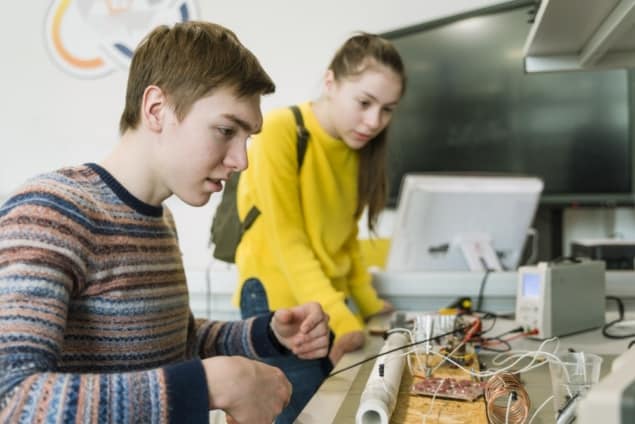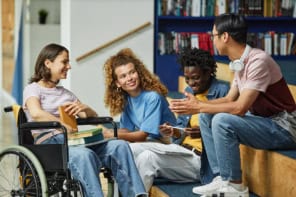
Lab sessions designed to emphasize and teach experimentation skills, rather than reinforce lecture content, improve student attitudes towards experimental physics. That is according to a study by researchers from Cornell University and the Colorado School of Mines, which also found that despite the experimentation labs covering half the number of physics topics, there is no difference in students’ exam performance.
In their study, the researchers randomly assigned almost 100 students who had been enrolled in an introductory, calculus-based physics course, to two different types of lab sessions. All students attended the same lectures and discussions, and took identical coursework and exams, but 54 of them attended lab courses designed to reinforce knowledge introduced elsewhere on the course. The other 43, however, were enrolled in lab classes that had specifically been designed to teach experimentation skills (Phys. Rev. X 10 011029).
We actually had trouble kicking them out of class
Natasha Holmes
Students who followed the traditional lab sessions, which closely followed lecture content, saw students being given instructions of experimental procedures and worksheets to complete. However, the experimentation lab students were expected to make decisions about the design and analysis of their experiments, and how to extend them. Over the course of the semester, instructions were reduced and lab sessions did not mirror lecture content at all.
More engaged
To assess the level of student engagement, observers attended lab sessions – recording each student’s behaviour and noting when they left the lab for the day. All lab sessions lasted 115 minutes, but students in the experimentation group stayed for significantly longer than those in the content-reinforcement labs, remaining on average for 118 minutes compared with 91 minutes. The researchers attributed these differences to the structure of the labs. In the content-reinforcement sessions, students could rush through the set tasks and worksheets, while participants in the experimentation labs were expected to repeat, improve and extend their investigations, without a defined end point. Shake-up to US graduate education needed, panel warns
“We think it’s teaching them to have ownership over their experiments, and they’re continuing to investigate,” says Natasha Holmes from Cornell, who was part of the study. “We actually had trouble kicking them out of class.” The labs also encouraged expert-like experimentation behaviours. Indeed, the observational data showed students in those labs were more likely to repeat their experiments to improve them – with or without prompting – and to identify and interpret disagreements between their data and a given model.
Surveys showed that students in the experimentation labs also had more positive attitudes and perceptions of experimental physics. “Compared to the traditional lab, where everyone’s really doing the same thing and just following instructions, we now have all of the students doing something completely different. They’re starting to be creative,” says Holmes.
Despite the experimentation labs covering half the number of physics topics, there was no difference between results in mid-term and end-of-term exams of the two groups. Emily Smith, at the Colorado School of Mines, says that despite decades of dissatisfaction with traditional physics labs, change has been slow due to concerns about the possible impact on students’ learning. “This study shows directly that the change can happen with no impact to students’ understanding of conceptual physics ideas, and with positive benefits to their behaviour and attitudes toward experimental physics,” she says.



